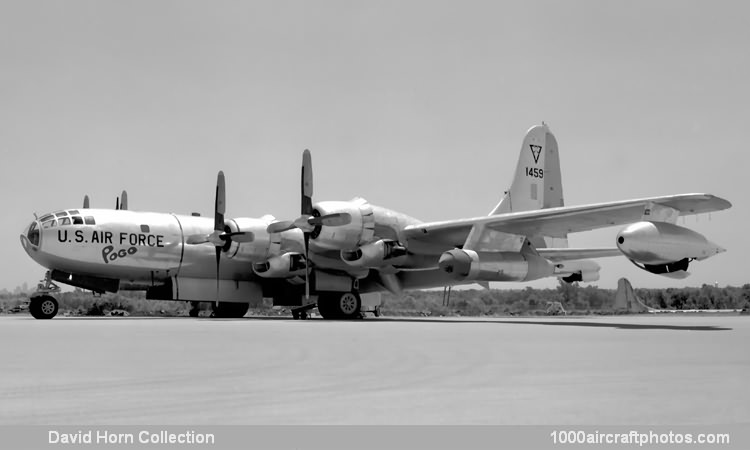04/30/2010. Remarks by Johan Visschedijk: "B-50 production was completed with a unarmed bomber-navigation trainer intended to familiarize specialized crews with the use of new' K' system radar bombing and navigation techniques developed for the B-47. Designated by Boeing as the Model 345-31-26, and TB-50H by the USAF, 24 aircraft were delivered between September 1952 and March 1953, s/n 51-447 to 51-470, c/n 16465 to16488.
Additional crew stations were provided for two students and an instructor and the rear bomb bay was packed with the electronic gear. Bombs could be carried in the forward bomb bay, which remained functional, but an actual drop was not necessary to crew training. A signal was transmitted at the moment of the theoretical drop and was scored by ground radar that was following the operation. Since the training missions were of relatively short-range, no provision was made for in-flight refueling, and because no gun turrets were fitted the lighter TB-50H was the fastest production B-50, with a top speed of 418 mph (673 kmh) at 31,000 ft (9,449 m).
For the final stage of their service career the 24 TB-50H were converted to KB-50K hose tankers by Hayes Industries. This was a three-hose arrangement, mainly for use of Tactical Air Command fighters which could refuel three at a time by the hose-and-probe method. One hose was unreeled from the tail, which was lengthened by six feet, and one each from a pod under each wing tip. To better match the faster jet receiver aircraft, two 5,200 lb (2,359 kg) st General Electric J-47 jet engines were installed at the former auxiliary wing tank locations.
Earlier, another 112 B-50s of various versions had also been converted, initially to KB-50 piston engine-powered tankers, later they were also fitted with J-47 jet engines, redesignated KB-50J."
